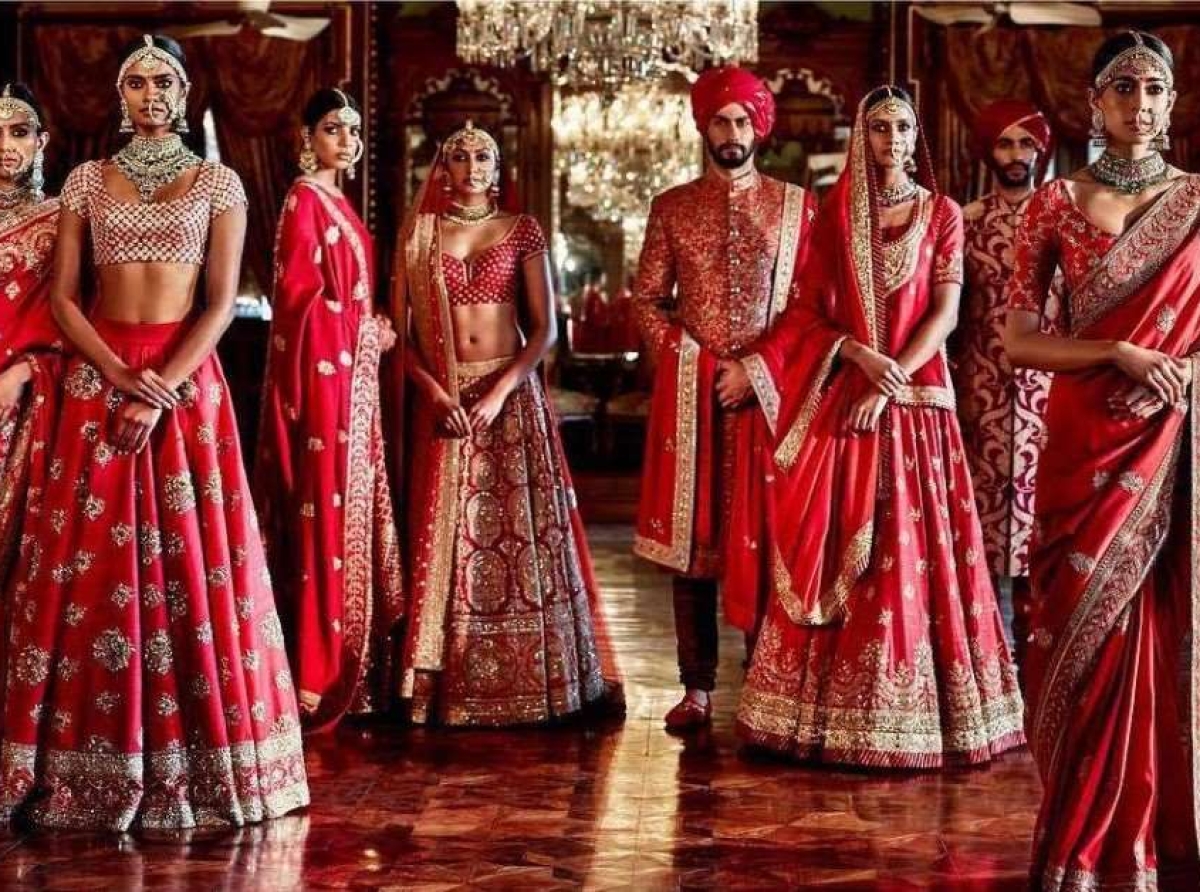Beyond Bling: India's booming wedding-wear market mixing tradition with modern hues

India’s fashion scene is witnessing a resurgence of ethnic wear, particularly evident in the booming Indian wedding wear market. This segment is not just about extravagant celebrity looks but a carefully curated blend of heritage crafts and contemporary sensibilities.
Market size and growth
While specific figures for bespoke and ready-to-wear are unavailable, India's wedding wear market is estimated to be worth over Rs 70,000 crore ($8.4 billion) and is projected to grow further. India is the second-largest market globally, only behind the US. And as per Clothing Manufacturers Association of India (CMAI) estimates, bridal wear constitutes 10-12 per cent of the total clothing market, highlighting its significance. Studies indicate, the international wedding market is projected to grow from $61.1 billion in 2023 to $83.5 billion by 2030.
In India, the segment is experiencing significant growth, with projections suggesting a CAGR in the range of 4-5 per cent. This growth is due to several factors like a rising middle class, increasing disposable income, and a growing appetite for designer wear.
Impact on traditional crafts
The demand for bespoke bridal wear has led to a renewed interest in traditional Indian crafts like embroidery techniques (zardozi, chikankari, etc.) and textile weaving (kanjeevaram, banarasi saris). High-end designers are creating exclusive, handcrafted wedding outfits, reviving traditional embroidery techniques like kalabatttu among others this empowers artisans and keeps these age-old practices alive.
Brides too are opting for multiple custom-made pieces reflecting their personal style and heritage. This trend is leading to the growth of bespoke couture by designers like Sabyasachi Mukherjee, Manish Malhotra, Anita Dongre among others, with prices ranging from Rs 50,000 to astronomical undisclosed figures. In fact, designers are reinterpreting traditional silhouettes and embellishments to create contemporary looks. This caters to the evolving preferences of millennial brides who seek personalized designs that reflect their individuality. For example, designer Anita Dongre's focus on lightweight lehengas with pockets, is a welcome change from the traditionally heavy styles. As Yash Dongre, President, House of Anita Dongre, points out their focus has always been on functionality and comfort as brides are uncomfortable wearing heavy lehengas. Also, the focus on intricate craftsmanship and personalization elevates wedding wear into heirlooms, passed down through generations.
The tiered landscape, metros vs. non-metros
The market caters to a diverse clientele. While metros witness higher demand for luxury couture, Tier II and III cities have a thriving market for ready-made designer wear and traditional ensembles. Brands like Manyavar and Roopam offer affordable options, making designer aesthetics accessible to a wider audience. As Rahul Mehta, Chief Mentor, CMAI explains, earlier weddings would be the occasions to wear formal tie-suits. The introduction of affordable Indian ethnic designer wear has been a game-changer.
While established designers garner significant attention, the commercial market is a major player. It offers a wider range of wedding wear options at accessible price points, making designer aesthetics more attainable for a larger audience. Experts point out, commercial brands contribute to a higher overall turnover compared to high-end designers. Unlike bespoke pieces, commercially produced outfits can be worn for multiple festive occasions, offering better value for money.
A flourishing fashion trend
This isn't a fleeting fad. The rise in disposable income, cultural revivalism, and growing emphasis on individuality are driving forces behind the market's sustained growth. Marriages are no longer one-day affairs, with pre-wedding functions creating further demand for occasion wear.
In fact, the growing appreciation for Indian heritage and the revival of ethnic wear suggest a long-term trend, not just a fad. Then there is Bollywood’s influence where weddings continue to be a major trendsetter, influencing the choices of younger generations. Moreover, increasing disposable income of middle-class families fuels demand for elaborate wedding celebrations and designer wear. The moot point is, Indian wedding wear market is not just about exorbitant couture; it's a story of cultural revival, economic empowerment, and the constant evolution of a nation's sartorial identity and this is not just a passing fad.
























